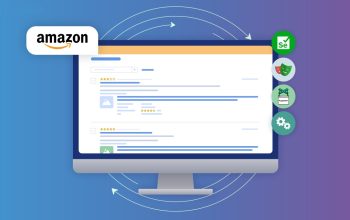Cyberattacks are a grave issue that affects businesses of all sizes. They can wreak havoc on networks, disrupt operations and cause enormous financial loss.
Cyber attacks come in many forms, each with its own specific principles. Understanding them can help you avoid them happening to your business or personal account.
Malware
Malware is an umbrella term for malicious software that targets digital devices and networks. It has the intent of disrupting operations, destroying or stealing data, spying on users, swiping money from online accounts and more.
Viruses, worms and trojans are the most prevalent types of malware. These programs infiltrate systems, taking data and credentials, spying on users, holding them hostage and more are all forms of malicious software.
Some of these infections are difficult to detect and may go undetected by antivirus programs. To avoid this from occurring, businesses should implement a “defence-in-depth” strategy. This approach protects your company by intercepting and mitigating attacks at multiple levels, enabling you to identify malware at its early stages.
Ransomware
Cybercriminals typically use ransomware as a form of data extortion. It enters a computer network, encrypts files with a public-key encryption cipher, and demands ransom in order to decrypt them.
Preventing ransomware attacks is the most important factor in protecting against it. Make sure your software and operating systems are always up to date with security patches, and install an anti-malware program that can detect and stop ransomware attacks before they spread.
Additionally, organizations should create a response plan and conduct regular ransomware drills to practice containment measures. Doing so will minimize disruption and guarantee an efficient recovery process.
Denial-of-Service (DoS) Attacks
A DoS attack is an attempt to disable a website or online service by flooding it with excessive traffic. This can cause the site to load slowly or become unreachable, thus denying legitimate users access to its services.
Preventing a DoS attack is usually accomplished by monitoring your network’s data traffic. Doing this can help you detect early warning signs of an attack before it causes your service to go completely offline.
A distributed denial of service (DDoS) attack that utilizes multiple attacking systems is known as a distributed denial of service (DDoS), and it’s more difficult to stop than an individual system attack.
Distributed-Denial-of-Service (DDoS) Attacks
DDoS attacks are often directed at companies that utilize a high volume of network resources, such as financial institutions, news organizations, security resource providers and government organizations.
An overload-based DDoS attack seeks to overwhelm a resource with massive amounts of traffic, blocking legitimate users from accessing the application or service. This results in disruption for both customers and businesses alike.
Preventing a DDoS attack begins with monitoring network and application traffic for anomalies. The sooner you detect them, the faster you can implement mitigation strategies and limit damage.
Man-in-the-Middle (MitM) Attacks
Man-in-the-Middle (MitM) attacks are a type of cyberattack that involves intercepting traffic between two parties. This could involve eavesdropping, sending false messages or accessing private accounts.
MiTM attacks are particularly hazardous for businesses that depend on sensitive data transmissions such as email, business applications and remote work. Not only can these lead to information compromise but also financial harm.
MitM attacks can be carried out via various methods, such as spoofing DNS or hijacking websites or WiFi networks. These vulnerabilities enable attackers to intercept and manipulate traffic while stealing account details or passwords.
Phishing
Phishing is an increasingly widespread cyber attack that targets human vulnerabilities. It’s one of the most complex and challenging threats to protect against, as it requires a large number of people to be aware of its tactics and put in place effective defenses.
Hackers use phishing to gain access to sensitive data such as credit card numbers, passwords and social security numbers. They may also use it to install ransomware or keyloggers on victims’ devices.




